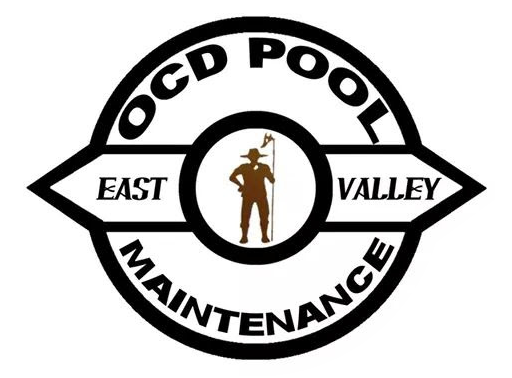A neglected pool can become a breeding ground for bacteria and algae. This poses serious health risks to swimmers. It’s important to keep the pool clean to prevent harmful microorganisms.
Cleaning a really bad pool needs a detailed approach. You must assess the pool’s condition, use the right tools and chemicals, and follow a step-by-step guide. This guide will help you clean your pool safely and make it enjoyable again.
Key Takeaways
- Assess the pool condition before starting the cleaning process in Phoenix
- Use the right equipment and chemicals for effective cleaning
- Follow a step-by-step process to ensure thorough cleaning
- Regular maintenance is key to avoid neglect
- Proper cleaning techniques can restore the pool’s original state
- Pool cleaning tips can help you overcome common challenges
Assessing Your Neglected Pool Condition in Arizona
To clean a really bad pool, start by assessing its condition. This step is key to understanding how bad the neglect is. It also shows what steps you need to take to fix it.
First, check the water quality. Look at how clear and colored the water is. If it’s murky or has an odd color, it might mean there’s a lot of algae or bacteria. Use a pool test kit to see the pH levels, alkalinity, and calcium hardness.
Checking for Algae and Bacteria Growth in Phoenix
Algae and bacteria are common problems in neglected Phoenix pools. Look for algae on the pool walls and floor. Green, black, or yellow patches mean algae is there. Bacteria might be harder to see, but cloudy water or bad smells can hint at its presence.
To tackle these problems, figure out why they happened. Was the pool ignored for too long? Was there poor circulation or filtration? Knowing why helps you use the right tricks to keep the pool clean.
For cleaning hacks, try a shock treatment to get rid of water contaminants. Also, brush the pool walls and floor to remove algae and bacteria. Make sure your pool’s filter is working well too.
Essential Equipment and Chemicals for Extreme Pool Cleaning in Phoenix
To clean a really bad pool, you need the right tools and chemicals. This ensures a safe and effective cleaning process. Extreme pool cleaning requires a detailed approach, starting with the essential equipment and supplies.
The key equipment for extreme pool cleaning includes a heavy-duty skimmer, a strong vacuum, and a robust filtration system. These tools help remove debris, dirt, and contaminants from the water. Also, a pool brush is needed for scrubbing the walls and floor to remove algae and stains in your Phoenix pool.
Understanding pH Balance and Alkalinity
pH balance and alkalinity are key in pool water chemistry. The pH level shows if the water is acidic or basic. Alkalinity shows how well the water can resist pH changes. Keeping the pH between 7.2 and 7.8 and alkalinity between 80 and 120 ppm is important. It ensures swimmer comfort, equipment longevity, and the effectiveness of cleaning chemicals.
There are many pool cleaning chemicals to choose from. Chlorine kills bacteria and algae. Algaecides prevent and treat algae. pH adjusters, like muriatic acid or soda ash, adjust the pH level. Alkalinity increasers, like sodium bicarbonate, stabilize the alkalinity level.
Here are some key pool cleaning chemicals and their uses:
- Chlorine: Disinfects and sanitizes the pool water.
- Algaecides: Prevents and treats algae growth.
- pH adjusters: Adjusts the pH level of the pool water.
- Alkalinity increasers: Stabilizes the alkalinity level.
It’s important to follow the manufacturer’s instructions when using pool cleaning chemicals. This ensures safe and effective use. Always wear protective gear, like gloves and goggles, when handling chemicals.
How to Clean a Really Bad Pool in Phoenix: Step-by-Step Process
Cleaning a neglected pool requires several important steps. These steps can make your pool safe and fun again.
Start by cleaning the area around your Phoenix pool. Debris and algae can build up, making the pool look bad. Cleaning this area helps keep the pool water clean.
Vacuuming the Pool Floor and Running the Pool Filter
Vacuuming the pool floor is key. Use a pool vacuum to get rid of dirt and debris at the bottom. Make sure the vacuum fits your pool type.
After vacuuming, it’s important to run the pool filter. The filter keeps the water clean by removing dirt and contaminants. Run the filter for at least 24 hours to clean the water well. Also, clean the filter regularly to keep it working well.
Testing and balancing the pool water is also important. Use treatments to adjust the pH, alkalinity, and calcium hardness levels. Balanced water is comfortable for swimmers and protects the pool equipment.
To keep the pool clean, skim the water surface often. Use a skimmer net to remove floating debris. Brushing the walls and floor helps loosen dirt and algae, making cleaning easier.
- Clean the pool surrounds to prevent re-contamination.
- Skim the water surface regularly.
- Vacuum the pool floor thoroughly.
- Run the pool filter continuously for at least 24 hours.
- Test and balance the pool water chemistry.
By following these steps and keeping up with regular maintenance, you can enjoy a clean, safe, and healthy pool at your Phoenix home.
Conclusion
Cleaning a really bad pool needs patience, the right tools, and knowing what to do. First, check your pool’s condition. Then, get the necessary equipment and chemicals. Follow a detailed cleaning guide to make your pool safe and fun again.
If cleaning your pool seems too hard or you’re short on time, think about hiring professionals. They have the skills and gear to clean your pool well. This way, your pool stays safe and clean for everyone to enjoy.
Keeping your pool in good shape is key to its long life and safety in Arizona. Regular upkeep stops algae and bacteria from growing. This means you won’t have to do a deep clean as often.
Need Pool Services in Arizona?
Contact OCD Pool Maintenance today to keep your pool in great shape with our weekly pool maintenance services!



